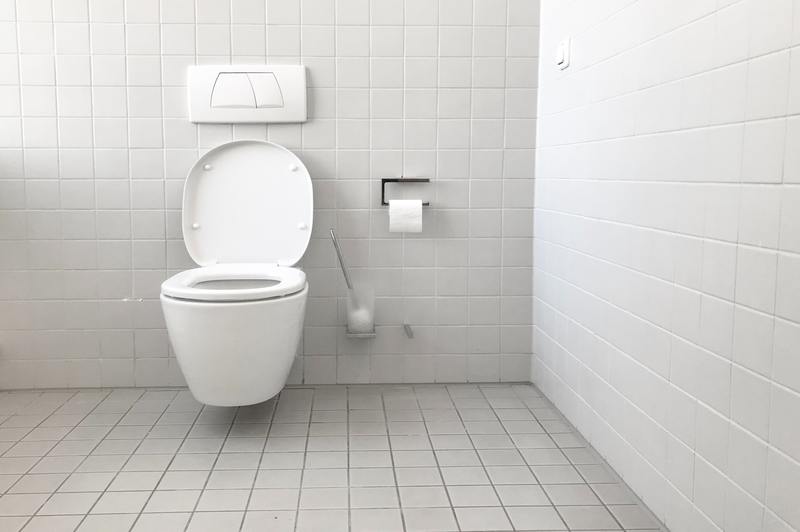One second, you are simply lifting the cover of your toilet tank — but now, you are searching online on how to clean toilet tank mold. Just like how fast this event escalated, molds can also grow equally quicker as long as there is stagnant water.
It is no secret that bathrooms are one of the popular breeding grounds for molds. It has everything they need to thrive and survive ― humidity and moisture. However, this does not have to be a stressor with the following tips and steps you can take.

Can Toilet Mold Make You Sick?
Whether it is a toilet mold or not, any type of mold can pose health risks. Molds are known to cause allergic reactions and trigger any existing respiratory issues in a person particularly the ones with compromised immune systems. This guide walks you through the different mold colors.
It takes mere inhalation of mold spores or in contact with its stains to get health illnesses. Thus, other than the fact that you need to maintain good bathroom hygiene, you also need to clean toilet mold to prevent any negative bodily reactions.
What Can I Use To Clean Toilet Mold?
In this cleaning process, you can simply grab cleaning agents that are available within your home. For easier skimming, the cleaning materials that will be mentioned are just sitting on your kitchen cupboards or laundry area such as vinegar, baking soda, bleach, and hydrogen peroxide.
You do not need to spend a fortune purchasing products that contain harsh chemicals. You do not need to visit convenient stores as well. With the cleaning options and procedures given below, cleaning toilet mold does not have to be expensive and risky.
Option #1. Vinegar and baking soda
To make sure that both of your bowl and tank are clean, pour a cup of vinegar into each of it. After which, sprinkle baking soda on the inner part of the toilet. Make sure to include the toilet water and the part under the rim of the bowl.
Let this solution sit for an hour or so. Afterwards, scrub away the toilet bowl to completely get rid of any mold residue.
Leave it for 15 minutes and then hit the flush. Continue to apply this solution a few times a week to prevent any mold growth.
Option #2. Bleach
It is undeniable that bleach is one of the known cleaning agents out there. This is because of its tough reactions to stains and other substances. The same goes for toilet mold!
To apply bleach, just simply fill a disposable spray bottle with one-part bleach and ten-parts water. There should be a greater amount of water in order to completely dilute the bleach and avoid a yellowish color reaction on your bowl.
Pour the solution into your toilet bowl, flush, and then scrub away the areas which are hard to reach. For your toilet tank, you can get rid of the mold through applying an undiluted bleach. If the mold buildup is still visible, continue to apply this solution.
Option #3. Hydrogen peroxide
This is mostly known for sterilization, but its toughness can kill toilet molds too. Simply pour a cup of hydrogen peroxide into the toilet bowl. To make the solution penetrate even further, grab a toilet brush and scrub the bowl particularly underneath the rim.
Without flushing the toilet, leave the hydrogen peroxide for 15 minutes. While waiting, you might witness little bubbles which are actually a good indicator for bacterias being killed. Lastly, flush the toilet and remember to apply this a few times a week to prevent mold contamination.
What Causes Toilet Mold?
Other than humidity and moisture, molds can also grow due to poor bathroom habits such as leaving waste for a long period of time. Mold infestation can also happen when you have left your toilet bowl and tank for quite some time without cleaning or checking up.
Also, molds thrive in places which have poor lighting and improper ventilation. As such, you should always keep an eye on your bathroom as this place provides everything that molds need to survive.
Of course, to not waste the time, effort, and resources that you have invested in this cleaning process, you need to know a few tricks on how to prevent mold from regrowing in your toilet. Mold remediation must include learning how fast mold grows so you can prevent the same situation in the future.
Conclusion
Knowing how to clean toilet tank mold is not a one-time process. There are reapplications that you need to do to entirely get rid of mold. Clearly, your battle with toilet mold does not end with your sigh of relief upon seeing your mold-free toilet.
However, like what was said earlier, it does not have to be an utter stressor in your life. You can ease your anxieties and frustrations away with this helpful guide coupled with your scrub brush and cleaning agent.
